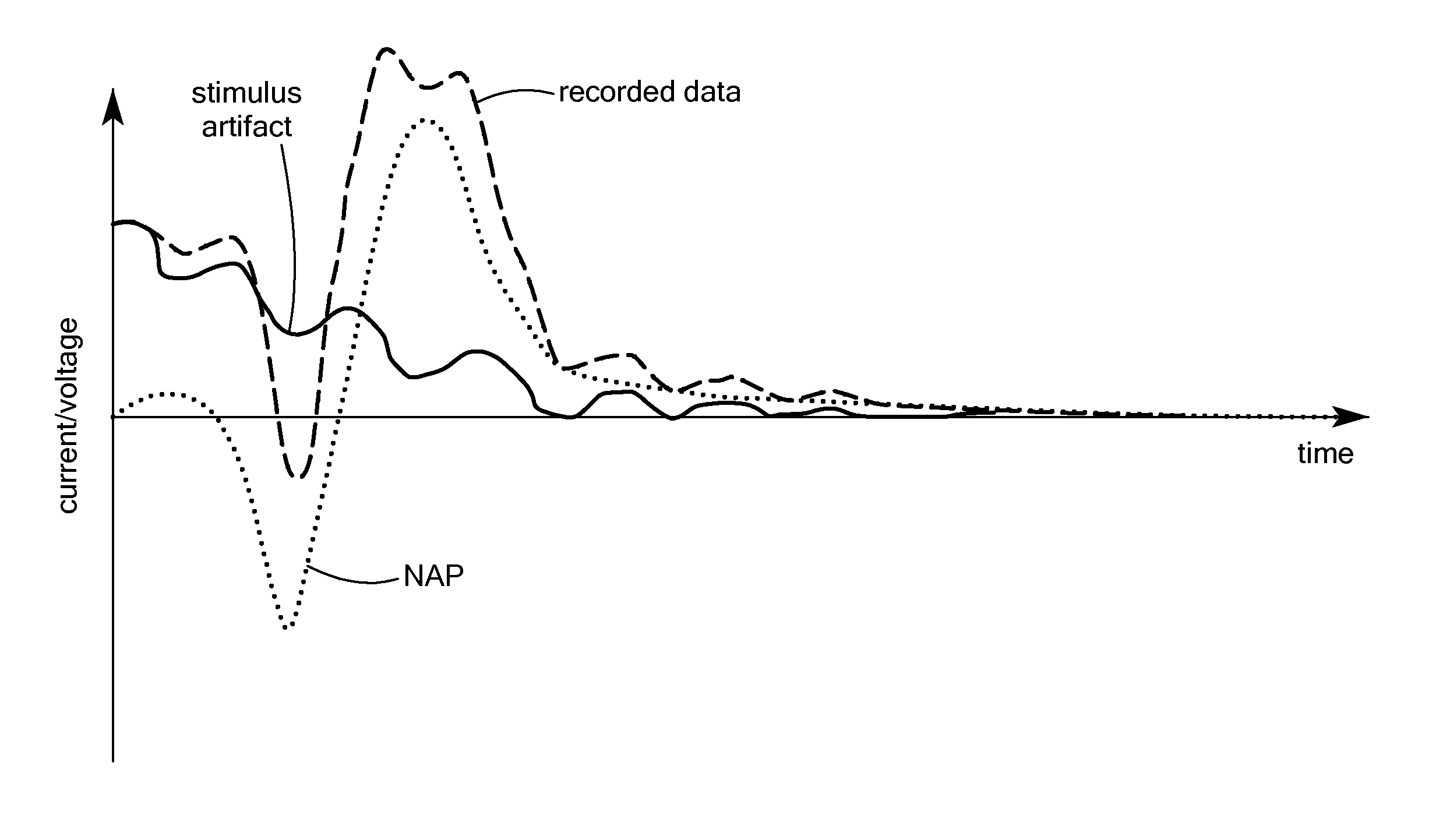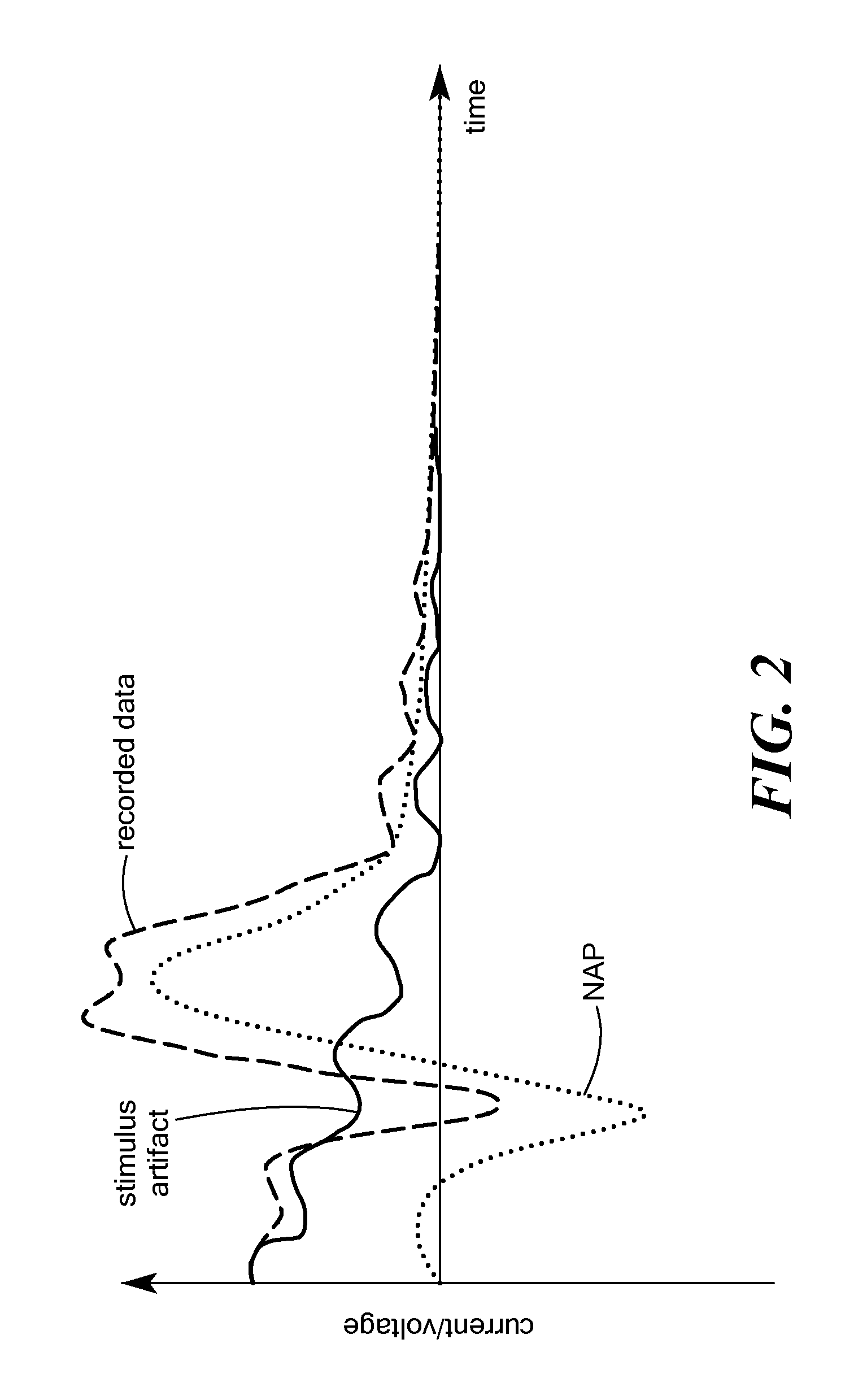Stimulus artifact removal for neuronal recordings
a technology of neuronal recording and stimulus artifact, which is applied in the field of medical implants, can solve the problems of unintentional recording of stimulus waveform (also called stimulus artifact) from this mixture, unfavorable measurement accuracy, and inability to completely hold the invariance of a nap
- Summary
- Abstract
- Description
- Claims
- Application Information
AI Technical Summary
Benefits of technology
Problems solved by technology
Method used
Image
Examples
first embodiment
[0016]Initially, there are two situations where the derivation of a new stimulus artifact waveform can be performed. In a first embodiment, a general waveform is a priori derived using a database of existing NAP waveforms. For Source A (the stimulus artifact) a sampled waveform is defined as xA and for Source B (the NAP) another sampled waveform is defined as xB, which are vectors of length N where N is the number of measured samples. As the performance of the source separation algorithm directly correlates with the distance of xA and xB, an optimal new stimulus artifact waveform can be which maximizes this distance.
[0017]One simple way to measure such a distance would be a Euclidean metric, such that the new stimulus artifact waveform can be derived by maximizing a cost function:
[0018]C=sqrt((xA(1)+xB1(1))2+(xA(2)+xB1(2))2+…+(xA(N)+xB1(N))2)+sqrt((xA(1)+xB2(1))2+(xA(2)+xB2(2))2+…+(xA(N)+xB2(N))2)+…+sqrt((xA(1)+xBM(1))2+(xA(2)+xBM(2))2+…+(xA(...
second embodiment
[0019]In a second embodiment, a patient dependent waveform is derived dynamically. The stimulus artifact waveform is known, so the achieved separation performance for the actual measurement can be derived. The measurement starts with the a priori derived waveform as described above. Using standard optimization algorithms such as a gradient descent search, the stimulus artifact waveform can be changed to be optimized for the actual measured waveform signal so as to achieve an improved separation performance.
[0020]Note that additional post-processing of xA and xB such as by a principle component analysis-based dimension reduction can further improve the performance of the waveform derivation. Also a more specialized metric such as a weighted metric may also show further improvements.
[0021]The fast identification of the Source A in the recorded waveform signal mixture can be performed using, for example, a matched filter approach which results in a source separation system that can ope...
PUM
 Login to View More
Login to View More Abstract
Description
Claims
Application Information
 Login to View More
Login to View More - R&D
- Intellectual Property
- Life Sciences
- Materials
- Tech Scout
- Unparalleled Data Quality
- Higher Quality Content
- 60% Fewer Hallucinations
Browse by: Latest US Patents, China's latest patents, Technical Efficacy Thesaurus, Application Domain, Technology Topic, Popular Technical Reports.
© 2025 PatSnap. All rights reserved.Legal|Privacy policy|Modern Slavery Act Transparency Statement|Sitemap|About US| Contact US: help@patsnap.com



